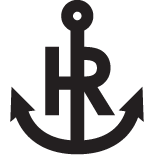Eight Dimensions of Quality
Tags: Quality
Eight dimensions of product quality management can be used at a strategic level to analyze quality characteristics. The concept was defined by David A. Garvin, formerly C. Roland Christensen Professor of Business Administration at Harvard Business School (died 30 April 2017). Garvin was posthumously honored with the prestigious award for 'Outstanding Contribution to the Case Method' on March 4, 2018.
Some of the dimensions are mutually reinforcing, whereas others are not—improvement in one may be at the expense of others. Understanding the trade-offs desired by customers among these dimensions can help build a competitive advantage.
Garvin's eight dimensions can be summarized as follows:
- Performance: Performance refers to a product's primary operating characteristics. This dimension of quality involves measurable attributes; brands can usually be ranked objectively on individual aspects of performance.
- Features: Features are additional characteristics that enhance the appeal of the product or service to the user.
- Reliability: Reliability is the likelihood that a product will not fail within a specific time period. This is a key element for users who need the product to work without fail
- Conformance: Conformance is the precision with which the product or service meets the specified standards.
- Durability: Durability measures the length of a product’s life. When the product can be repaired, estimating durability is more complicated. The item will be used until it is no longer economical to operate it. This happens when the repair rate and the associated costs increase significantly.
- Serviceability: Serviceability is the speed with which the product can be put into service when it breaks down, as well as the competence and the behavior of the service person.
- Aesthetics: Aesthetics is the subjective dimension indicating the kind of response a user has to a product. It represents the individual’s personal preference.
- Perceived Quality: Perceived Quality is the quality attributed to a good or service based on indirect measures.
Related
Is related to Quality Management
